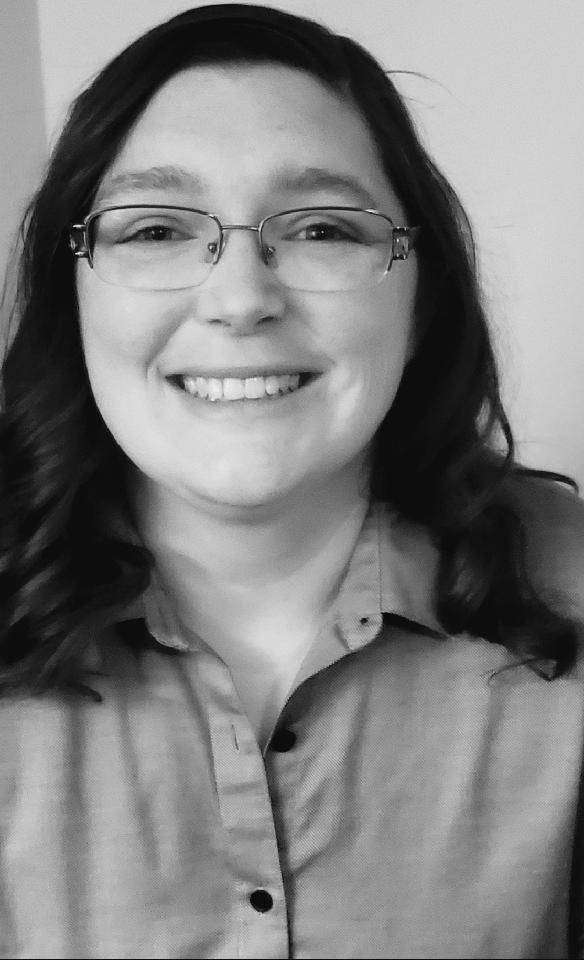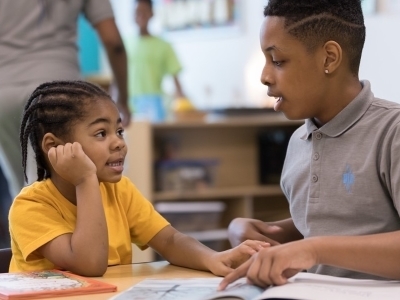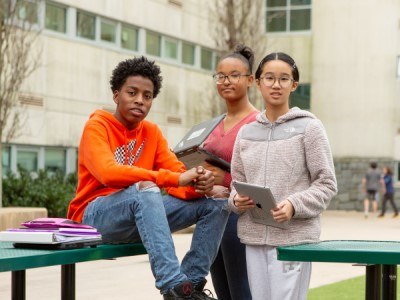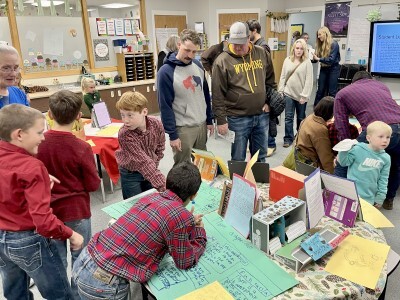1 Simple Way to Bring Joy and Meaning to Student Reflections
Topics
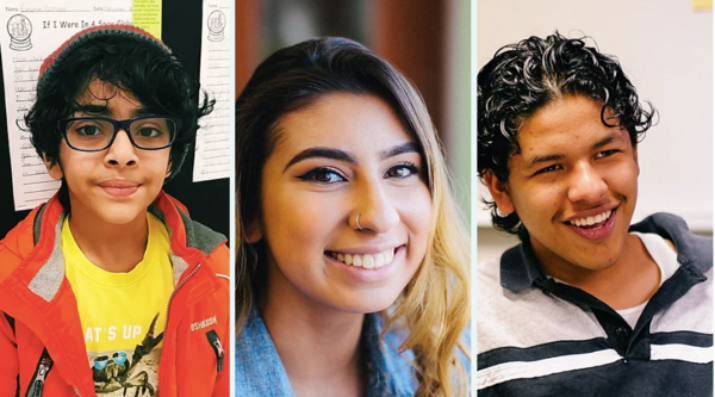
Educators are rethinking the purposes, forms, and nature of assessment. Beyond testing mastery of traditional content knowledge—an essential task, but not nearly sufficient—educators are designing assessment for learning as an integral part of the learning process.
Student reflection is an important formative assessment strategy. Find out how teachers can use lateral thinking to make it both joyful and meaningful.
Reflection is an important element in an ethical assessment process. It allows us to understand more honestly what learners know and can do than if we asked them just to complete a task. Sure, teachers can make external observations and can evaluate a product, but so much thinking goes on during task completion; observations and products cannot fully capture it all. We must rely on reflection to fill in more of the story of a learning journey. Without it, the assessment is not as truthful, not as honest, as it could be.
One implementation question is, how do you make reflection joyful, meaningful, and keep it from becoming stale? Afterall, if you just ask the same reflection questions, even when the task changes, it becomes a rote exercise.

One strategy is to employ some lateral thinking. I love to ask learners to reflect on their understandings and mindsets using objects, images, song titles… anything not related to the thing on which they will reflect. I often use wooden blocks. Or if I’m doing a session in a library, I’ll ask folks to find a book title to describe how they're feeling about the work. Pictures and quotes are great. I can work it into most protocols, use it as an activator or a summarizer for a lesson, or use this type of thinking to get folks to connect with one another.
Kareen Briggs, sixth grade teacher at Freedom Elementary School in Freedom, New Hampshire, has been using this method of lateral thinking to get her learners to reflect more deeply about their goals, their learning, and their feelings about the topics they are exploring in her classroom.
When I met Kareen, she was already employing goal setting and reflection as part of her math instruction. Unfortunately, the reflections were not as deep as she knew they could be. She was looking for strategies to get more of an understanding from her students about what specific actions helped them in meeting their goals and what they were still struggling with. When I shared the lateral thinking method as a way to reflect with the Freedom team, Kareen jumped on the idea.
She’s been doing this type of reflection for nearly a year now, so I asked her to share some of her experience. Here’s a little of what we talked about.
What was it like when you first started?
They struggled at first. You can see by the first ones that they were short. But once they understood what we were doing, their reflections generally got longer and more complex. This is a new school year and the first time I did it, they were confused a little, but they caught on quickly.
What if students can’t think of anything or cannot make a connection to the images or words you share?
That’s fine. They can still reflect on their goals or learning and how they think they did.
Do students have to write the reflection?
Nope. Sometimes we talk about it as a class and everyone shares. I don’t have any students who can’t write, right now, but if that was a barrier they could always say or draw a reflection.
What if the connection didn’t make sense to you?
That’s ok. I find out a lot about how students think during this process. And, they’ll interpret the same thing in different ways. One of the first reflections I did for math goals was to ask them which they thought they were most like as it related to their math goals: Hunter/Gatherer, Agricultural Society, or Civilization. I also shared pictures so they could look at those too as inspiration. We had just studied these topics in social studies, so it gave me a little understanding about what they remembered from that class. One student looked at Hunter/Gatherer as a beginning, so they were at the beginning of meeting their goals. Another student looked at the same picture and wrote they were “hunting my smart goal down.” They then referenced specifically how they were hunting their goals through volunteering to answer questions each day. So, both students chose the same thing, but took different approaches.
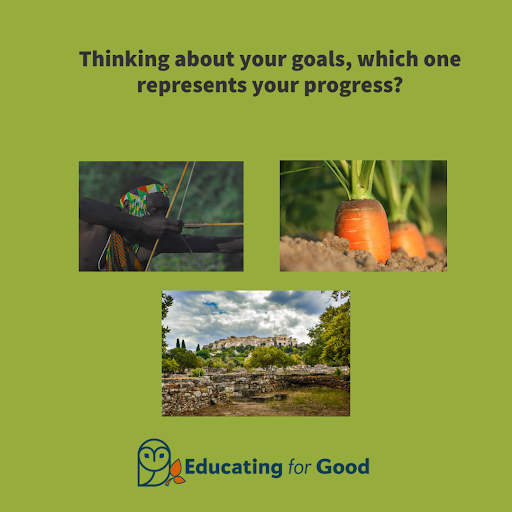
What was your favorite reflection?
For ELA, they had to analyze their group’s ability to complete a task. I took the language from our lessons on characterization so it was a review and also a reflection. The prompt said:
You have learned strategies to help you see more about the characters and issues in your novels. These strategies can also be used to think about relationships in your own lives. Which strategy below best represents your book club experience in Bend I and why? Be honest, no one will see these but me.
And I used the graphics from our ELA program to help guide the conversation. I got the longest responses for this one. It was a good way to have them think about collaborating and I learned a lot about how they approached a group task. It was also private just to me so they had an opportunity to be honest and they were. One student wrote about how they were not a perfectionist, but their partner was, and their “traits collided” but they figured out how to get the work done.
How have you extended this practice in other ways?
Our students go to a middle school in another district, so each year, I fill out a transition document that gets school counselors and teachers an idea of what each student likes, doesn’t like, excels at, and struggles with. Instead of me doing all the work, I modified it where the students completed their own reflection about themselves. The last thing I asked was:
Please share at least one experience, project, activity, etc. that you really liked doing in elementary school and explain why you liked it.
Students had been so used to reflecting thoughtfully that they ended up writing a lot about themselves. More than I think they would have if we hadn’t spent so much time practicing.
Photo at top courtesy of Assessment for Learning Project.

